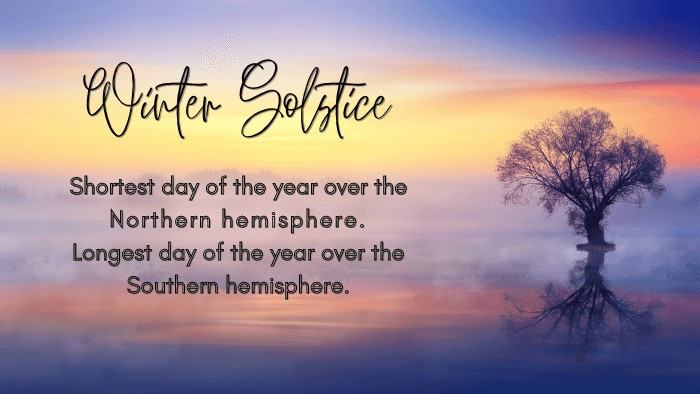Winter Solstice 2024: A Global Celebration of the Shortest Day
Today will have the fewest daylight hours for people in the northern hemisphere. It marks the official start of astronomical winter, a time when the sun reaches its most southerly point in the sky as seen from Earth. At noon, it appears directly overhead at the Tropic of Capricorn, located at a latitude of 23.5 degrees south. This astronomical event correlates to the shortest day of the year in the Northern Hemisphere, which is tilted as far away from the sun as possible and, in turn, experiences the fewest hours of sunlight. The exact moment of the solstice occurred on December 21st at 4:20 a.m. EST (0920 GMT), according to In the Sky.org.
Stonehenge: A Neolithic Alignment with the Sun
People are gathering at Stonehenge in Wiltshire to mark the winter solstice. Hundreds headed to Stonehenge in Wiltshire to welcome in daybreak. The Neolithic monument, with its massive stones, was built to align with the Sun in both midwinter and midsummer. This alignment isn’t just a coincidence; it’s a testament to the astronomical knowledge of the people who built it thousands of years ago. Our livestream captured heart-warming moments, from a group of friends who have written their own song about the solstice, to an eight-year-old who got lost on the way to Stonehenge with her dad. Stonehenge’s immediate surrounding area has several pits, three of which may have held large "totem-poles" between 8,500 and 7,000 BC. The stones associated with the site are now thought to have been placed there around 2,500 BC. One young visitor, eight-year-old Georgia, and her father arrived early to witness the sunrise. Georgia, having studied the monument at school, was captivated by the experience, noting the “little finger prints or hammer marks” on the stones and the singing and chanting as the sun rose.
The Stonehenge solstice celebrations
The solstice celebrations at Stonehenge draw crowds from all over the world. These celebrations are a unique blend of ancient tradition and modern-day reverence for the natural world. The event highlights the connection between humanity and the celestial cycles that govern our planet. The solstice isn't just about the shortest day; it's a time for reflection and community, a shared experience that transcends cultural boundaries.
Newgrange: Older than Stonehenge, a Passage to the Light
In Ireland, similar celebrations happened at the prehistoric monument of Newgrange, where attendees selected by a lottery were able to enter the Stone Age structure. In County Meath, Ireland, lies a mound much older than Stonehenge. The prehistoric monument, called Newgrange, is more than 5,000 years old and features a 19m-long (62ft) passage. It's believed to have been built by Stone Age farmers. The passage leads to a chamber with three alcoves. The mound is surrounded by 97 large kerbstones—some are engraved with symbols. During the winter solstice, the sun shines perfectly through an opening in the roof called a roof box, which slowly illuminates the entire corridor. The central chamber glows for around 17 minutes. People flock to watch the event, with those allowed inside decided by a lottery. The sunrise is also livestreamed, ensuring that even those who can't be present in person can still experience this remarkable event.
Global Traditions and Celebrations
The longest night of the year is marked by different events and traditions in different parts of the world. In Iran and Central Asia, many celebrate the Persian festival of Yalda, with families and friends gathering—often staying awake all night, to eat, drink, and read poetry. Nuts and fruits, particularly red fruits such as watermelon and pomegranate, are traditionally eaten. The occasion celebrates the triumph of light over darkness. In China, the Dongzhi festival—which roughly translates as “winter’s arrival”—also celebrates the triumph of light over darkness on the winter solstice. It sees families get together to celebrate and share a meal with traditional foods, such as rice balls called Tang yuan. The celebrations are testament to the enduring human connection to the cycles of nature, a yearning for the return of light and warmth, and a chance to connect with community and family.
The Science Behind the Solstice
Winter solstice happens when the North Pole is tilted furthest away from the Sun during the Earth’s orbit. In the southern hemisphere, it's the opposite story—the South Pole is pointing towards the Sun, making it summer in countries like Australia. People there will be celebrating their summer solstice today. But even though this is the day with the fewest hours of daylight, the solstice does not mark the earliest sunset of the year, or the latest sunrise. The mornings will continue darkening until early in the new year. That’s because a solar day is not always exactly 24 hours long. Earth experiences seasons because the planet is tilted on an axis by 23.5 degrees. This tilt, combined with Earth's orbit around the sun, creates the variations in daylight hours throughout the year.
A Day of Hope and Renewal
In Shetland, where the latest sunrise in the country was this morning, the darkness “bites harder up here in the North,” according to Laurie Goodlad, a tour guide. Living through the darker days “has its challenges. You do have to… gear yourself up for the darker days and you do need to be quite resilient,” she says. “It’s just a different way of life.” But she adds that the solstice is a day of hope, since the days will get longer now. The lengthening days won’t be noticeable until the end of January, but Goodlad says she reflects on how people celebrated the day in the past. She, like many others, embraces the solstice as a turning point, a time to look forward to the return of the sun and the promise of longer, brighter days to come. The solstice marks not an end, but a new beginning—a time of renewal and hope, celebrated in diverse and meaningful ways across the globe.

















